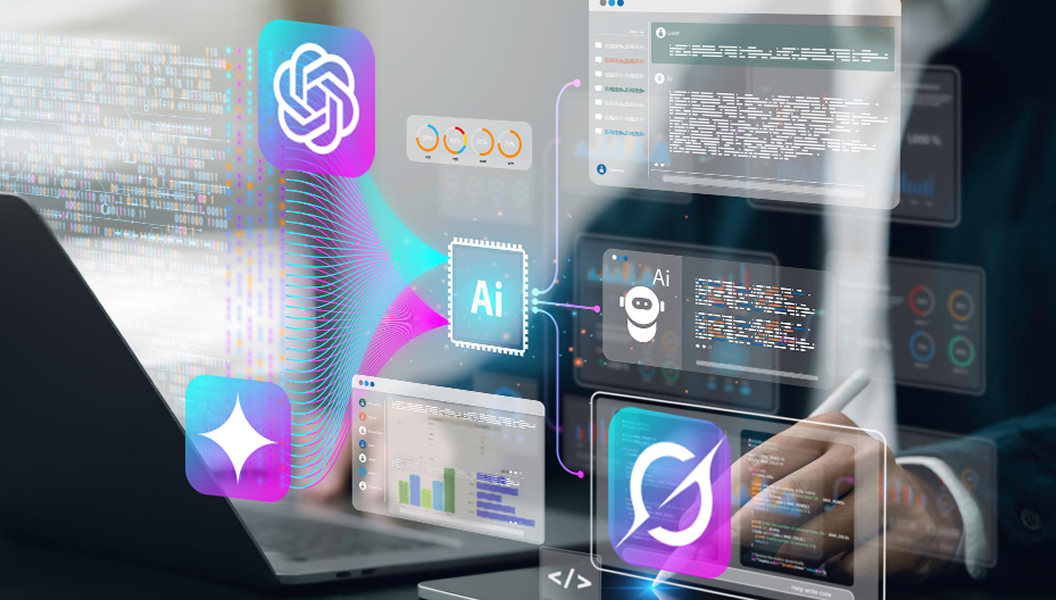In today’s FinTech landscape, data is everything. But let us be honest – there is a lot of it. Spreadsheets packed with numbers, dashboards overflowing with widgets, and reports that read more like novels than tools for decision-making. It is no wonder teams often struggle to make sense of it all in real time.
That is where Generative AI steps in. And no, it is not just a trendy buzzword or a fancy chatbot trick. It is a serious game-changer.
The Problem: Data Overload Meets Decision Paralysis
Fintech companies thrive on speed. Whether you are approving loans, monitoring transactions, or predicting customer churn, fast, accurate decisions are your lifeline. But making those decisions is becoming harder, not easier.
Why? Because the volume of data has exploded, and so has its complexity. Customer behavior, market shifts, risk scores, regulatory changes… all of it is interconnected. And yet, many organizations still rely on manual data analysis or rigid BI tools that can not keep up with the pace.
The Solution: Generative AI Turns Data Into Dialogue
Generative Artificial Intelligence (AI) changes the game by interpreting, summarizing, and presenting data in human-friendly formats.
Instead of sorting through a dozen dashboards, imagine asking: “Which user segments are showing unusual spending patterns this quarter?”
And getting a response like: “Segment B42 (users aged 30-45 in Central Europe) showed a 24% spike in crypto transactions, primarily tied to new NFT offerings.”
This is not a dream. It is happening today. Thanks to Generative AI models that are trained not just to parse data, but to communicate insights from it.
How FinTechs Are Using It
- Conversational Reporting
No more digging into reports. Teams can query financial data using natural language and get answers instantly – text, charts, or both.
- Real-Time Risk Flags
Instead of static thresholds, AI models detect nuanced patterns in transaction data and raise smart alerts when something looks off.
- Personalized Dashboards
Using generative AI, dashboards can adapt based on the user’s role, habits, and goals, showing relevant insights, not just raw data.
- Enhanced Compliance Monitoring
AI can surface anomalies in audit trails and generate summaries for compliance officers, helping teams stay ahead of regulatory checks.
The Other Side of the Coin: Challenges You Can not Ignore
Generative AI offers huge potential in FinTech, but it is not without risks. To use it responsibly, leaders need to be aware of the following challenges:
Data Security
Financial data is a prime target for cyberattacks. If AI systems are not properly secured, sensitive information like transactions, credit histories, and personal details could be exposed. It is essential to ensure encryption, strong access controls, and compliance with data protection regulations at every layer.
Model Bias
AI models learn from historical data, and that data is not always fair. If bias exists in the inputs, the AI may produce skewed results, such as unfair lending decisions or inaccurate risk scores. Regular audits and diverse training data are critical to keeping AI outputs in check.
Regulatory Compliance
Finance is a tightly regulated industry, and AI does not get a free pass. From General Data Protection Regulation (GDPR) to anti-money laundering (AML) rules, any AI system must be transparent, auditable, and aligned with legal standards. If the model can not explain its decisions, it can not be trusted in regulated environments.
Reliability & Accuracy
Generative AI is powerful, but it is not perfect. It can misinterpret data or generate plausible-sounding but incorrect insights. That is why human oversight still matters, especially for high-stakes decisions like credit approvals or fraud detection.
Why It Matters
For fintechs, it is not just about saving time – it is about gaining an edge.
Speed: AI cuts hours (or days) of analysis into minutes.
Clarity: Complex datasets are translated into plain language.
Confidence: Leaders make informed decisions without second-guessing the numbers.
And here is the best part: it levels the playing field. Small teams can now harness the kind of insight that used to require a full data science department.
The Human Touch Still Matters
Let us be clear – AI is not replacing analysts or finance teams. It is augmenting them. By handling the heavy data lifting, it frees humans to focus on strategy, innovation, and relationships.
Think of it as your financial co-pilot – always scanning the horizon, flagging turbulence, and helping you land smoothly.
Final Thoughts
The future of finance is not just digital – it is intelligent. And generative AI is the bridge between raw data and real insight.
If you are still treating your financial reports like static archives, it might be time to rethink. Because with the right AI tools, even the messiest spreadsheet can become your next breakthrough moment.
Ready to bring Smart Finance to your team?
Start by asking one simple question: What would you do differently if you could understand your data instantly?



